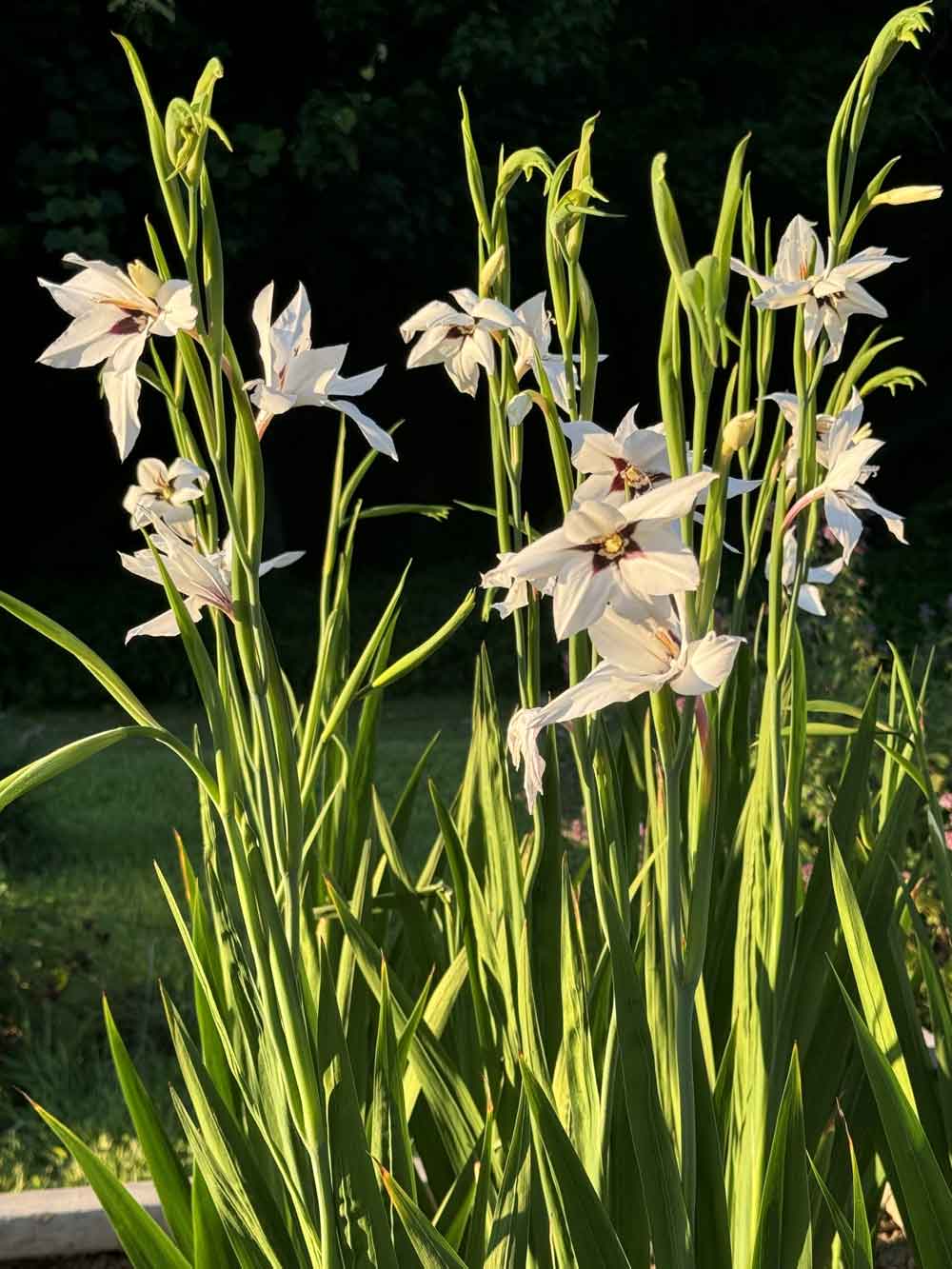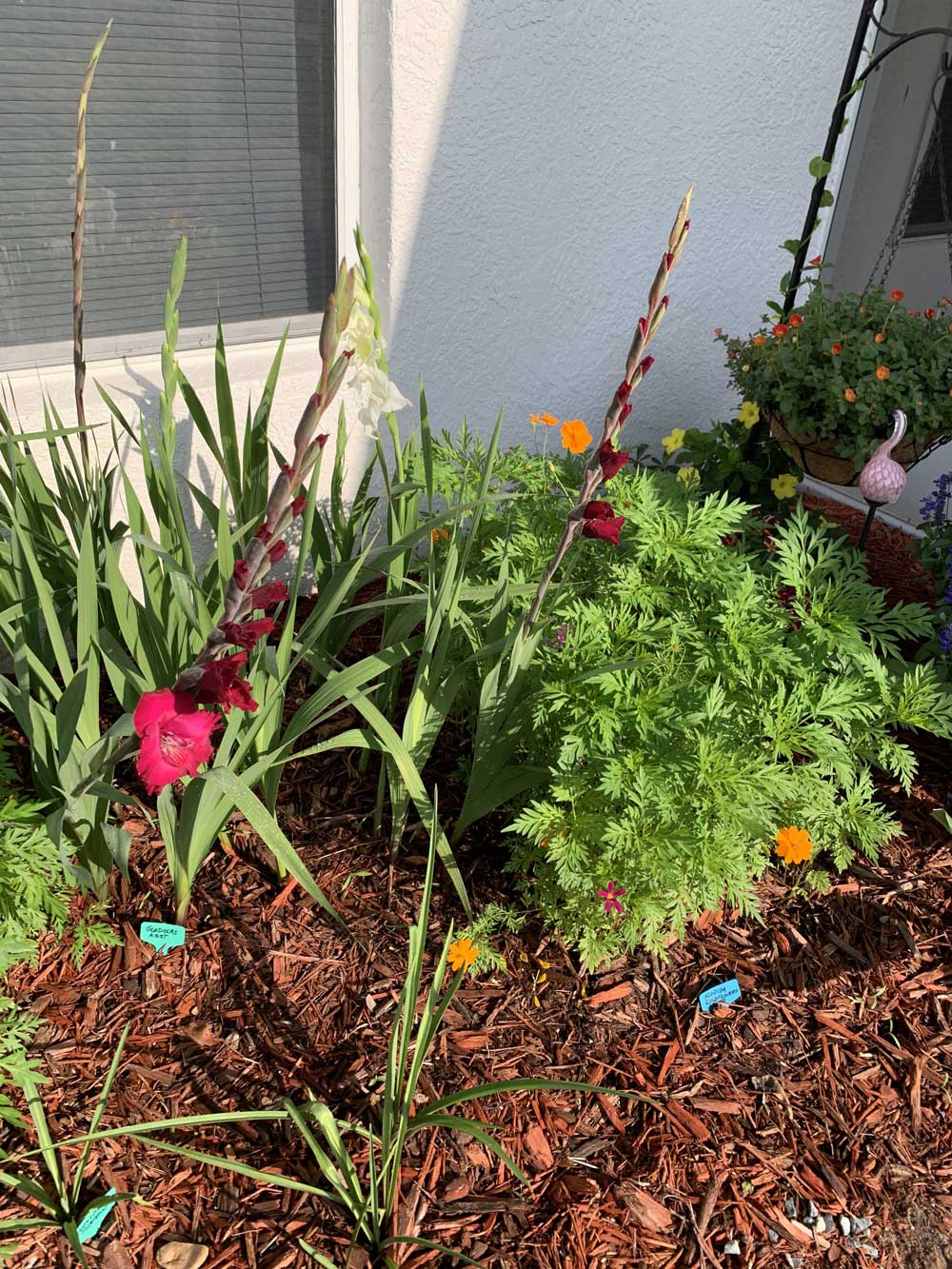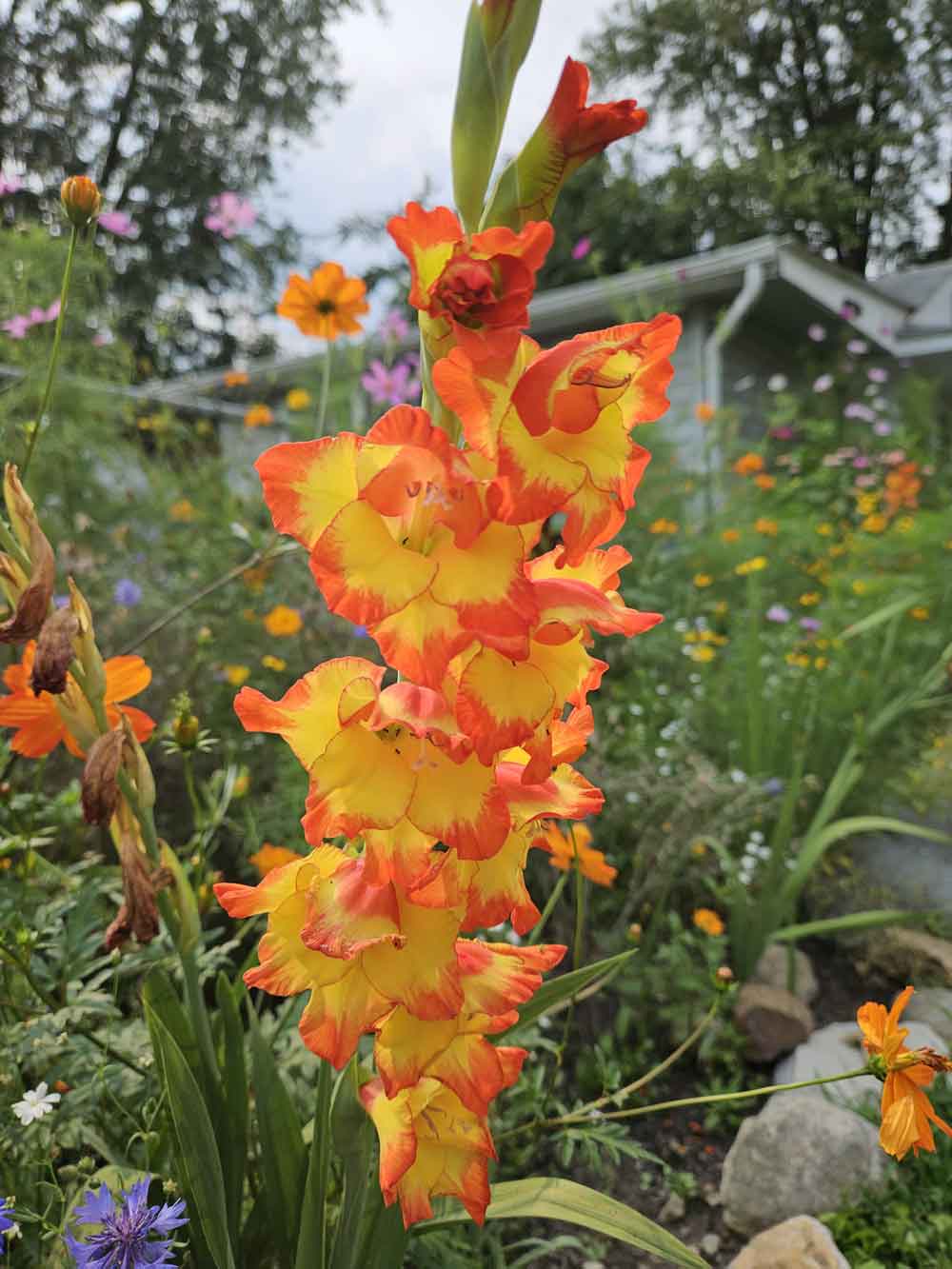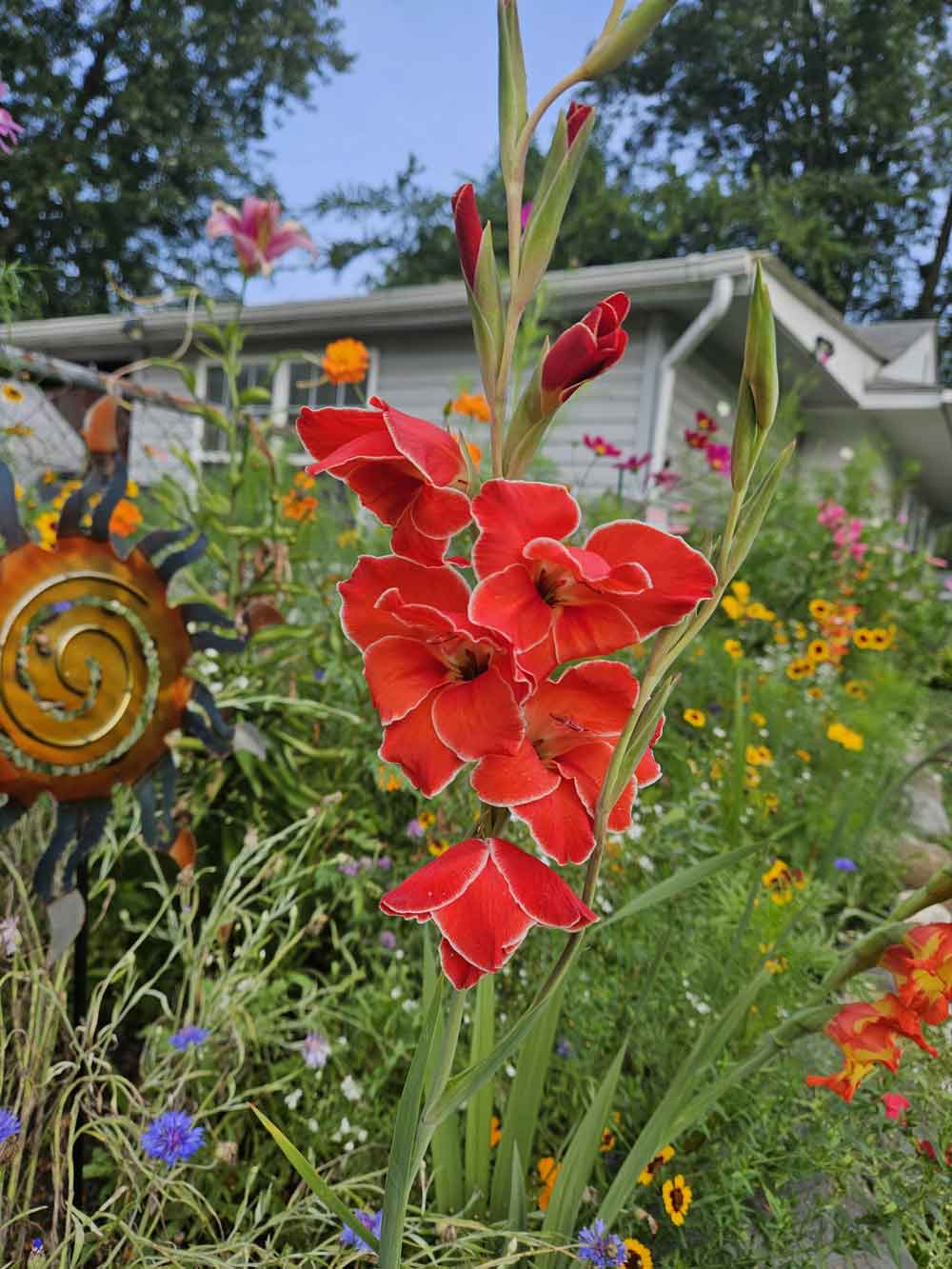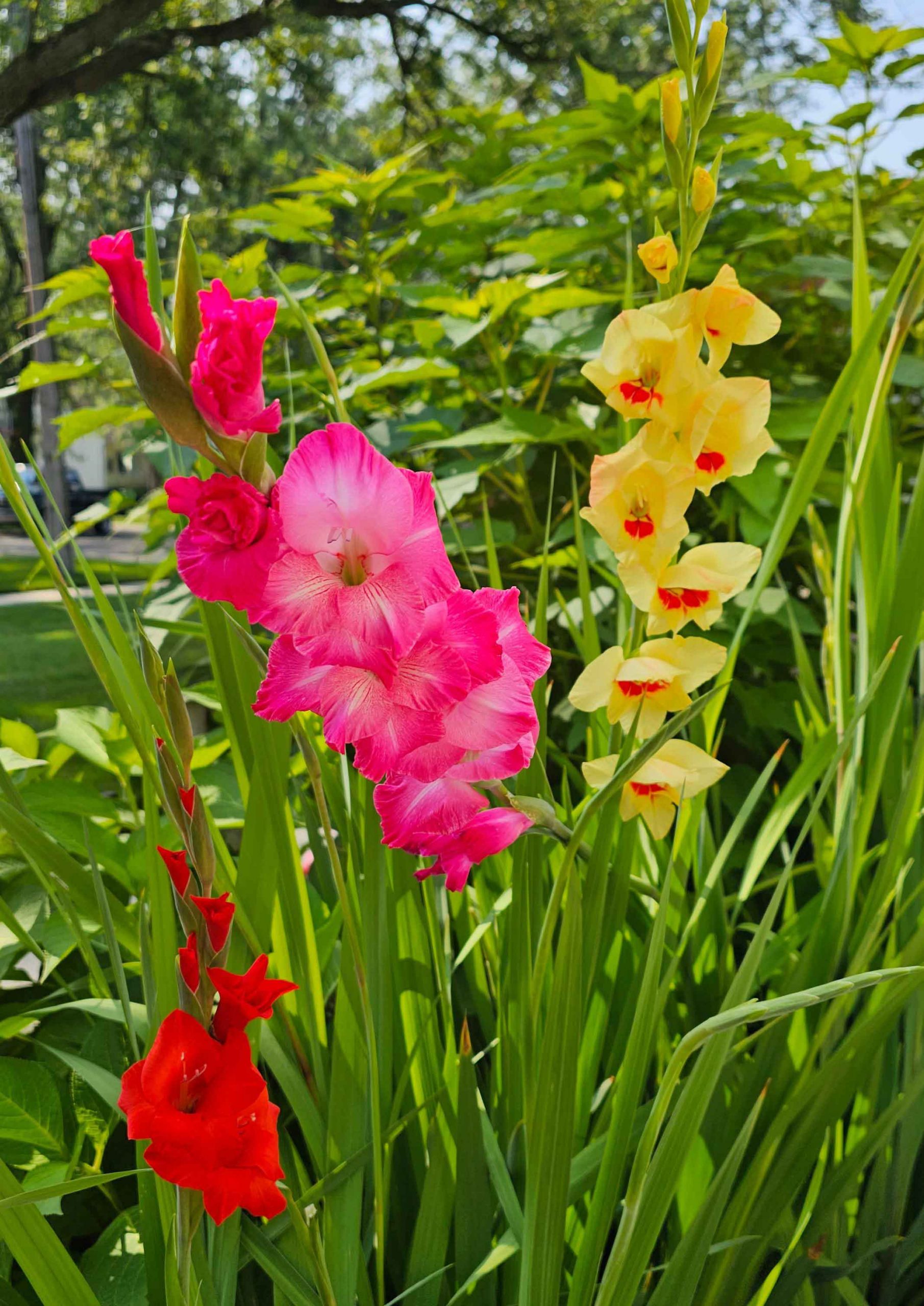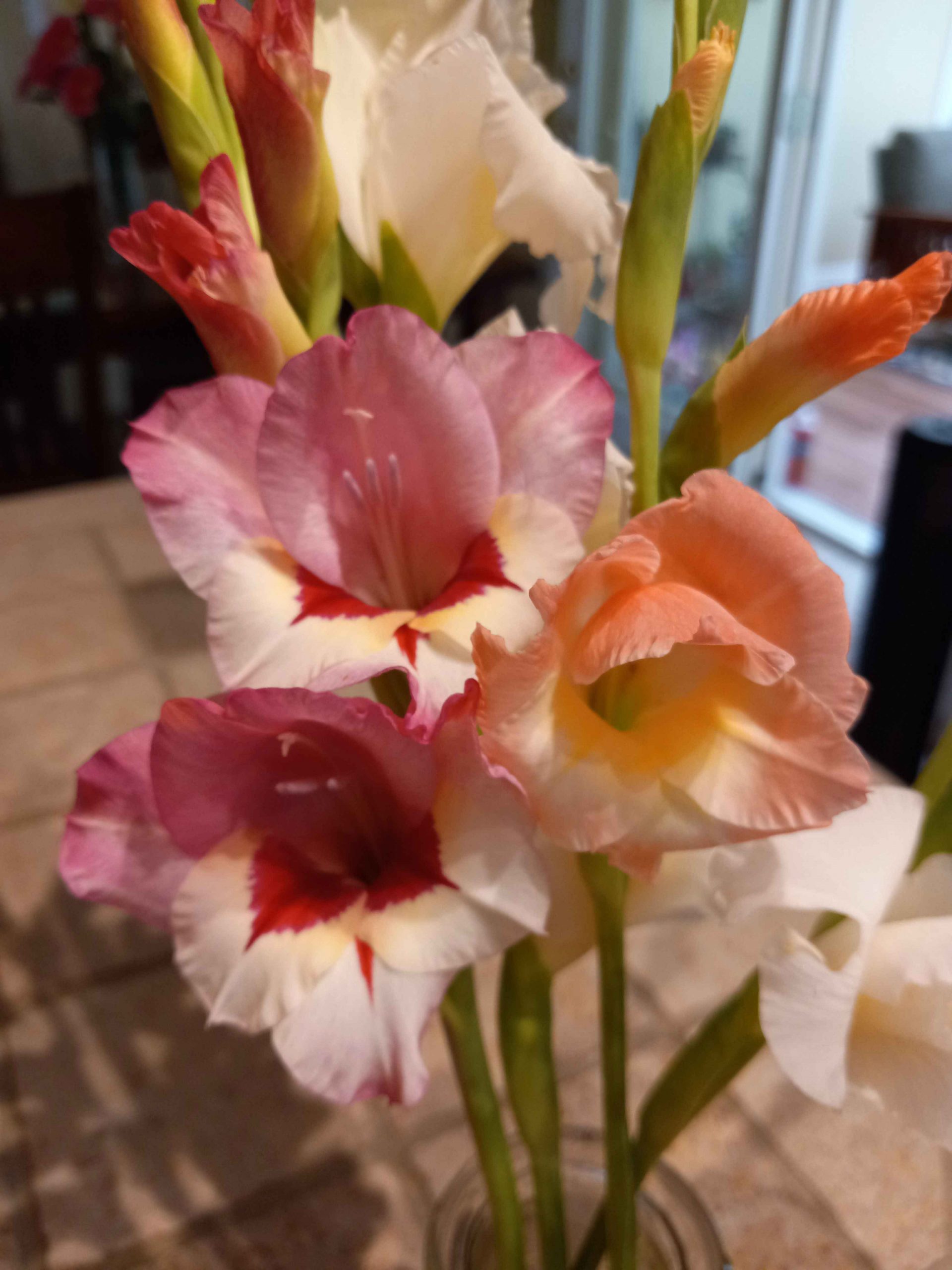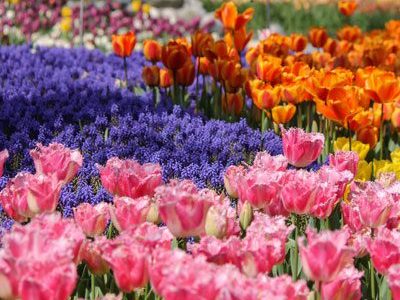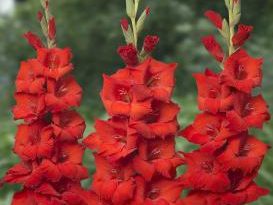About Gladiolus
Gladiolus (from Latin, the diminutive of gladius, a sword) is a genus of perennial bulbous flowering plants in the iris family – Glads actually do not grow from bulbs but from “corm” – a closely related cousin. Sometimes called the sword lily, the most widely-used English common name for these plants is simply gladiolus (plural gladioli, gladioluses or sometimes gladiolas). The Gladiolus flower signifies remembrance. It also expresses infatuation, telling the receiver that he or she pierces the heart. Gladiolus plants are attractive, perennial herbs and semi hardy in temperate climates. All gladioli are easy to grow, colorful and make great cut flowers, hence their popularity. With very little work needed, your Gladiolus will burst into bloom in August, adorning your garden with bright colorful tall flowers that will make for a wonderful addition to any scheme.
When to Plant Gladiolus Bulbs
Plant your Gladiolus in the spring, as soon as the soil has warmed up in March or April.
Where to Plant Gladiolus Bulbs
While they prefer full sun, Gladiolus will still grow well in partial shade. Gladiolus plants prefer a rich, soft soil, and plenty of water. If the soil is poor, add a little fertilizer to help stimulate growth.
How to Plant Gladiolus Bulbs
The Gladiolus bulbs (or corm) can be grown in rows, or bunches. They will tolerate a little crowding, but will grow bigger if spaced out. We recommend planting the bulbs 4-6 inches deep – secured deep in the ground, you are less likely to need a stake. Plant them about 6 inches apart. If you have bought quite a few, don’t plant them all at once. Stagger their planting and you will get a better succession of flowers. Add mulch to help retain water, and to keep the weeds down. Gladioli need plenty of water to flower well. On well-drained poorer soil, extra watering will be required. Once planted, your gladiolus should grow well with little attention.
How to Care for Gladiolus
If you live in a temperate region, mulch the bulbs deeply with 2.5 inches of compost to give them an insulating duvet over their heads in late autumn. In colder regions, grow them in a sheltered spot and lift them for the winter when the leaves turn yellow-brown. Lift them and snap the corms from the stems. Dry them out for a couple of weeks, then snap the new corms from the old, discarding the old. The new must be kept dry and cold (but frost-free) until they are replanted. You can dig and divide the clumps every few years to select the best corms for replanting. Without this, the new cormlets forming will invade the space of the original corm and the nutrients will have to be shared. The risk is lots of foliage and no flower spikes.

